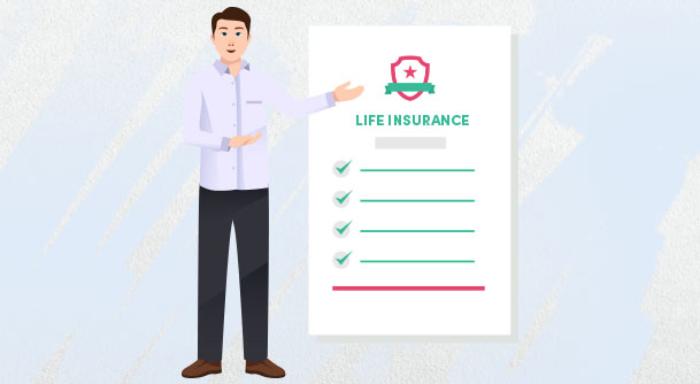Your Complete Guide to Investment Declaration
Blog Title
2674 |
9/9/24 4:30 AM |
Managing your finances might seem like a maze, especially when it comes to taxes. Have you ever looked at your paycheck and wondered how you can keep more of your hard-earned money? That’s where investment declaration comes into play.
What is an Investment Declaration?
Simply put, it is a process where employee declares their tax-saving investments they plan to make at the beginning of the financial year. This helps them get an estimate of how much tax to deduct from your salary each month.
Investment declaration is a great way to optimise your take-home salary.
In this blog, we’ll explain the importance of investment declaration and provide a simple guide on the declaration process.
Why is Making an Investment Declaration Important?
Maximise Your Tax Savings: Making an investment declaration enables you to take full advantage of tax benefits under different sections of the Income Tax Act. Depending on your investments, you might be eligible for deductions under Section 80C, 80D, 80CCC, 80DDD and more. If your employer knows about your tax saving investments, they can directly apply the deductions to your in-hand salary. To put it simply, declaring your tax saving investments will reduce your salary’s TDS. This means more money stays in your pocket each month, significantly increasing your monthly budget.
Ensure Accurate Tax Deduction: Your employer will assume that you haven’t made any tax-saving investments unless you make an investment declaration. As a result, they will deduct more tax from your salary than necessary. Investment declarations ensure that only the correct amount of tax is deducted, giving you a clearer picture of your finances.
Common Types of Investments and Expenses You Can Declare
Understanding which investments and expenses you can declare can help you save on taxes. Here’s a simple breakdown:
House Rent Allowance (HRA): You can claim tax deductions on the money you spend for rent. All you need to do is fill out Form 12BB with details like your landlord’s name, their PAN number, and the rental address.
Leave Travel Concession/Allowance (LTC/LTA): If your employer offers Leave Travel Concession (LTC) as part of your salary package, you can use it to claim travel expenses for trips within India. To do this, make sure you declare LTC in your investment declaration if it’s included in your salary package. This can save you some tax on any travel expenses.
Home Loans: Your home loan interest payments are eligible for tax benefits under Section 24(B) of the Income Tax Act. You’ll need to provide your name, PAN card details, and a provisional interest certificate from your bank as proof.
Life Insurance Premiums: Paying premiums for life insurance? You can declare these too! The premiums you pay for your life insurance policies qualify for tax benefits under Section 80C of the Income Tax Act. You’ll have to provide your premium receipts as proof of payment before claiming the deductions. Life insurance can not only help you save on taxes but can also help you ensure your family’s financial protection.
What is Form 12BB?
Salaried employees need to submit Form 12BB to their employer if they want to claim tax benefits on investments or expenses. Employers will only consider the tax-saving measures that you have declared on this form. This is why it is essential to be thorough while filling up Form 12BB. Generally, Form 12BB is submitted towards the end of the financial year.
A Step-by-Step Guide to Make an Investment Declaration
Fill Out the Right Form Usually, your employer will provide you with a tax declaration form, i.e., Form 12BB. This is where you will list all your planned investments and expenses that are eligible for tax deductions. Filling this form correctly is the first step in your investment declaration process.
List Down Your Investments Think about the investments you plan to make during the year. Common tax-saving investments include:
• Employees’ Provident Fund (EPF)
• Public Provident Fund (PPF)
• National Pension System (NPS)
• Life Insurance Plans
• Equity-Linked Savings Schemes (ELSS)
- Submit the Form to Your Employer Once you’ve filled out the declaration form, submit it to your employer. They will use this information to adjust the TDS (Tax Deducted at Source) on your salary, ensuring that you’re not overtaxed during the financial year. You will also benefit from the increased in-hand salary, allowing you to plan your monthly budgets with greater freedom.
What Happens Next? Proof Submission
At the start of the financial year, you must only declare your planned investments. However, towards the end of the financial year (around January or February), you’ll need to submit proof of these investments. Here’s what you need to do:
For Life Insurance Premiums: Submit copies of the premium payment receipts.
For PPF and ELSS: Provide account statements or transaction proofs.
For Medical Insurance: Show the premium payment receipts.
It is crucial to collect all the necessary documents and submit them on time. Your investment declaration will be considered invalid if you fail to provide the relevant documents. This in turn will lead to higher tax deductions from your salary.
Things to Be Careful About When Making an Investment Declaration
Forgetting to Declare Investments
Overlooking your eligible investments can result in higher tax deductions, which could mean less money in your pocket each month.
Missing Deadlines for Proof Submission
Employers set specific deadlines for submitting investment documents. Missing this deadline can lead to incorrect tax deductions.
Declaring More Than You Can Invest
While it might be tempting to declare higher investments to reduce tax deductions, remember that failing to invest as declared could lead to discrepancies at the end of the year. Your declaration will be invalidated if you fail to provide the appropriate documents as proof. So, ensure that you are only declaring investments that you can invest in.
Keeping Your Declarations Updated
Your financial plans might change during the year. Updating your investment declaration is essential if you decide to change your investment plans midyear.
How Edelweiss Life Insurance Can Support You
Feeling overwhelmed by all the investment options out there? Don’t worry, you’re not alone, and we’ve got your back. We’re here to guide you to maximise your tax savings while ensuring your financial security.
At Edelweiss Life Insurance, we offer a range of plans that cater to your unique needs. Whether you’re interested in life insurance policies that provide both protection and tax benefits, or other investment options to help you achieve your long-term goals, we’re here to help you make the best choices. Just reach out to us, and together, we’ll make a financial plan that secures your future and ensures your prosperity!
Wrapping up
Here’s a crucial piece of financial advice: always keep an eye on your financial plan and stay up to date with your investment declarations. Regularly review your tax-saving investments and make adjustments as per your financial goals.
Aastha Mestry - Portfolio Manager
An Author and a Full-Time Portfolio Manager, Aastha has 6 years of experience working in the Insurance Industry with businesses globally. With a profound interest in traveling, Aastha also loves to blog in her free time.





